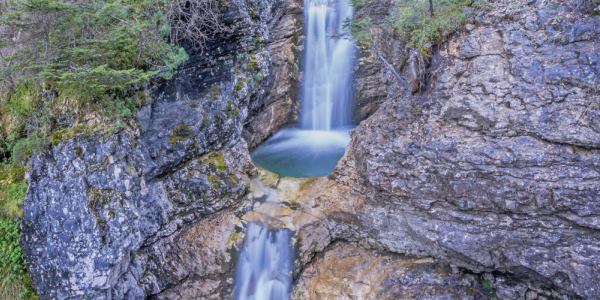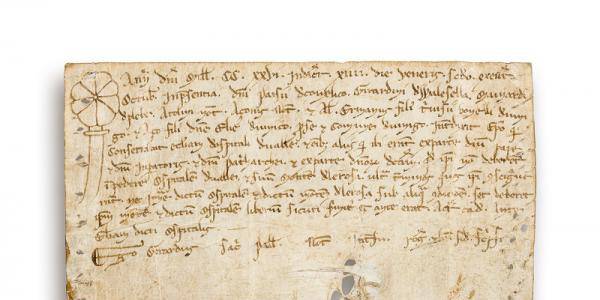In Cortina d'Ampezzo, as in many other European sites, collective ownership, known as vicinie, partecipanze, regole, has been existing for centuries. Hence, Regole d'Ampezzo were created many centuries ago with the aim to regulate the collective and undivided use of the territory.
This ancient system of rules stipulates collective rights of ownership and enjoyment of the natural, cultural, and economic heritage. Lands cannot be sold, nor can their intended use be changed. A collective heritage, in which conservation and production merge and which must be passed down to future generations.

The trail along Ru de Federa waterfalls is designed to run along the watercourse for almost its entire length, from Bariza in Cu to Monte de Fedéra. Only two portions are left out: the lower reach towards the confluence with the Boite river and the upper one from Fedéra to Lago da Lago
Discover the Trail
For many centuries, the collective ownership of forests and pastures was the main source of sustenance for the people living in the mountains. This system was born with the first inhabitants, likely some Celtic tribes who settled in the valley and used pastures in common. The Romans considered the pastures as belonging to the farms (masi) of the valley and called them compascua pro indiviso: i.e. pastures were private property of a community.
Discover moreHistorically, the Regole were mainly concerned with the management of pastures and only in a later time the institution assumed the responsibility of the collective management of forests and timber. The Regole d'Ampezzo still perform their traditional function: managing the territory, with agroforestry and pastoral purposes, and preserving the environmental resources which have become a fundamental issue.
See all the Activities
The Regole d'Ampezzo own three museums and promote cultural activities to safeguard and enhance the value of the historical, scientific, and linguistic heritage of the Ampezzo community.
Discover the Museums